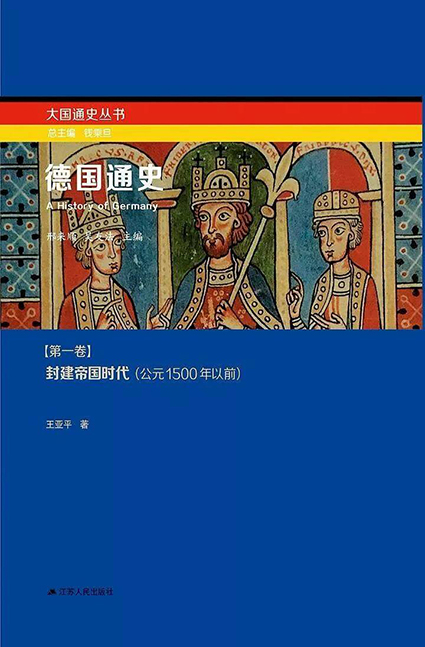China's first multivolume book of German history

A History of Germany
Prior to the 1990s, domestically published books related to German history were all translated from foreign books. After the 1990s, many works of German history by Chinese were published in China. However, these works were limited in length, and emphasized political history at the expense of society, culture and economy.
A History of Germany was completed over ten years by a number of famous domestic experts on German history. The book consists of six volumes and 3 million characters. As the first multivolume German general history book in China, it describes the history of Germany from the prehistoric age to 2010. This work is a symbolic and summative achievement of the study of German history in China. It is worth noting that this book emphasizes in particular on analyzing the impact of the Protestant Reformation and the Enlightenment on German history and the detailed process and reasons behind Germany being the source of two world wars.
To evaluate a historical work, especially a historical academic work, the richness and diversity of research materials is an important criterion. As for German history books previously published in China, a considerable proportion of their references come from domestic German research monographs. Furthermore, the majority of their foreign references are from literature in English. This book changes this situation to a large extent. The first volume of this book can be taken as an example. In the work’s eight-and-a-half-page reference list, Western literature accounts for seven and a half pages, while Chinese literature less than one page. Among Western references, German literature accounts for the majority. Although primary German literature sources feature less and secondary sources of German literature feature more, it can be said that this book makes great progress, especially considering the previous situation of German history research in China.
This book also has its limitations. First of all, many engaging passages appear in the first four volumes, which are written about German history before contemporary times. However, co-written by several authors, the last two volumes of Germany’s contemporary history seem to lack sufficient highlights. Secondly, this book basically adopts the framework of traditional general history books, using chronological organization and discussing content in such fields as politics, economics, society, culture and diplomacy in a horizontal and methodical manner. The advantage of this writing style is that it covers content more comprehensively. However, its shortcomings are also very transparent. Written in a flat and straightforward way, it does not consciously seek to solve problems.
edited by YANG LANLAN

 PRINT
PRINT CLOSE
CLOSE